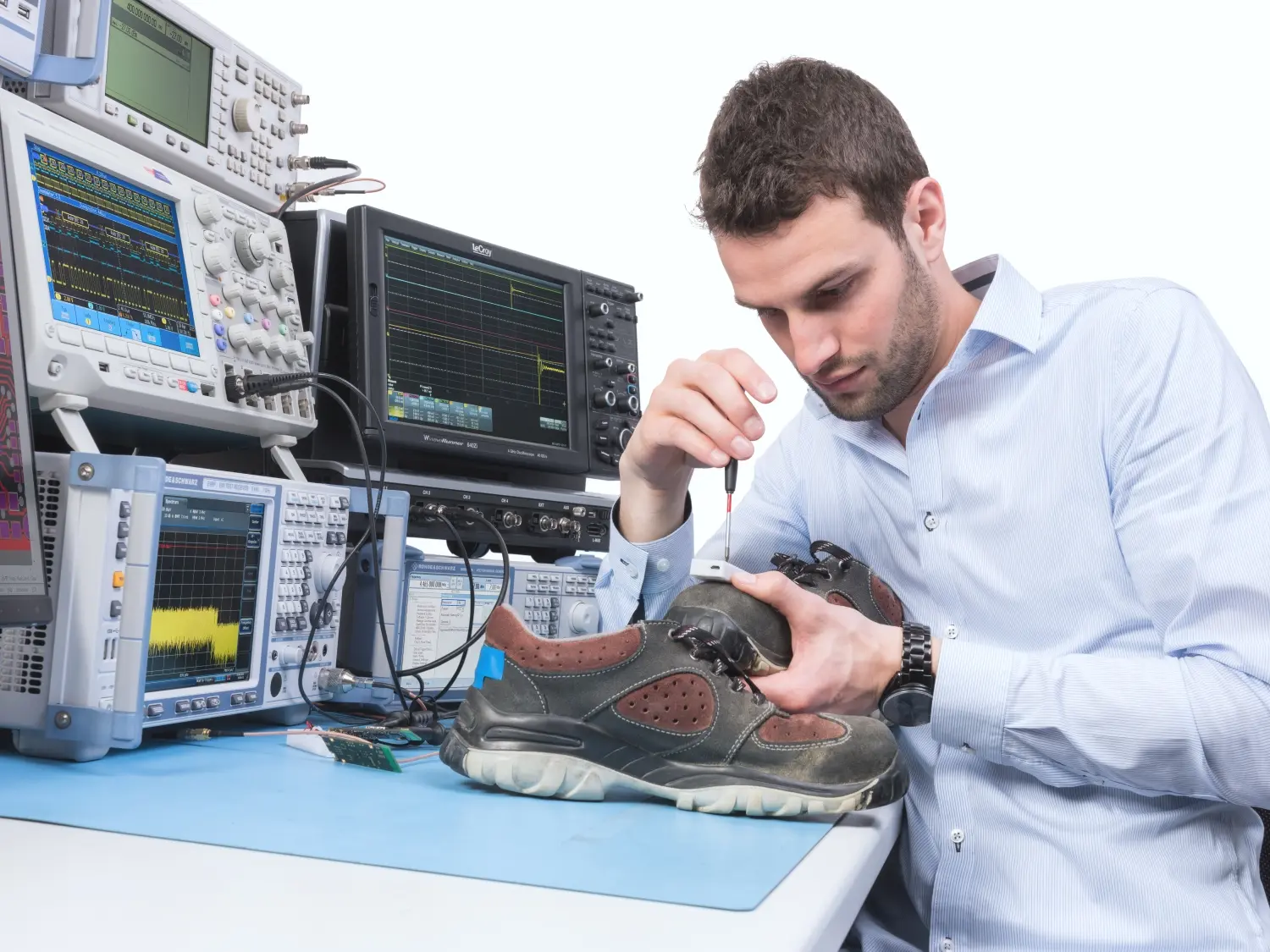Development of an algorithm for gait analysis
The computer-assisted recording of human movements, such as steps, is connected with many challenges. In order to improve a measuring method that has been rather inaccurate until now, an algorithm for gait analysis was developed at the Institute of Signal Processing and Wireless Communications. It is now possible to measure steps using acceleration and rotation-rate sensors.

Differing approaches
Human beings expect to move about in space as a matter of course, be it walking, sprinting or climbing stairs. Following an injury or illness, but also in elite sport, there is often a need to correct and/or optimise motion sequences. Biomechanical research aims to recognise disadvantageous motion sequences. To this end, relevant parameters, such as step length and step height, must be recorded. The precise measurement of these parameters represents a technical challenge that is tackled using various approaches – each with specific advantages and disadvantages.
Sensors instead of visual measurement technology
The greatest measurement precision for human movement is currently achieved with expensive measuring systems that comprise several cameras and entail complex image processing. For cost and complexity reasons, it is only possible to examine one subject at a time using such measuring systems. An alternative procedure, which was previously too imprecise and which is based on the use of cost-efficient and compact inertial sensors, was further developed within the framework of an MSc thesis at the Institute of Signal Processing and Wireless Communications (ISC). Data from a large number of subjects can thus be collected at the same time. No external infrastructure is required for the taking of measurements using the inertial sensors. Just one sensor is attached to each foot; these record the acceleration and rotation rate in three dimensions. The signals from these compact inertial sensors are, however, overlaid by random interference which, with the previous method of signal processing, do not provide sufficiently accurate motion parameters. The algorithm newly developed at the ISC makes it possible to partially correct this interference. This means that the sensor’s movement and the relevant motion parameters can be measured more precisely.
A precise alternative
The measuring accuracy of the improved procedure was tested by the project partner, the Institute for Biomechanics of ETH Zurich, using the more accurate but also more laborious visual procedure. The measurement errors were now only in the millimetre range, so that a degree of precision has been reached that makes more research results possible in the field of biomechanics.
About the author of the thesis
Christof Rutishauser graduated with a Master of Science in Engineering. His MSc thesis, entitled “Digital signal processing of IMU signals for gait analysis”, was conducted and supervised at the Institute of Signal Processing and Wireless Communications.
Supervisor: Marcel Rupf
